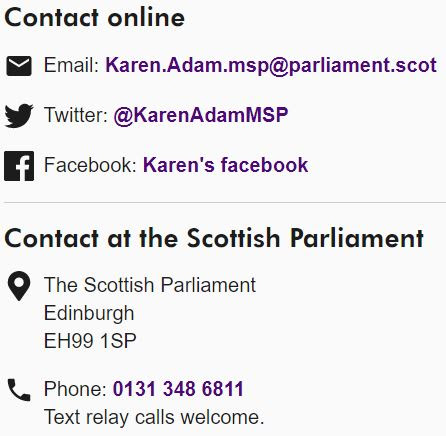Bridge strikes, frequently caused by lack of driver awareness of bridge heights, is costing the public purse around £0.5 million a year.
Transport Minister Stewart Stevenson today highlighted the costs at the annual industry TruckFest show in Edinburgh as he launched a new driver information campaign to raise awareness of the risks to drivers of high vehicles approaching bridges.
The Transport Scotland ‘Strike it Out’ campaign aims to raise awareness of the dangers of striking a bridge as well as highlight the cost to the public of repairs and delays.
Mr Stevenson said:
“Bridge strikes impact heavily on road users, both in terms of delays whilst an incident is being dealt with and later as repairs are carried out, often at substantial cost.
“While it is fortunate that to date there have been no serious injuries or death as a result of a bridge hit, it is important that for a small investment we can raise awareness of these risks and help provide advice to prevent bridge strikes happening in future.
“We are working with a number of industries, including road and freight hauliers, farming, ferries and ports to help communicate the message to drivers of high vehicles to check and plan their route before setting out and carefully consider bridge signs on approach.”
The standard height for a bridge is 16 feet 6 inches (approx. 5 metres) however the majority of strikes occur on trunk road bridges above this height.
In Scotland at least ten road bridges are hit each year, at a danger to both the vehicle driver and the public, and a significant cost - in the region of £500,000 each year for repairs alone. The most commonly hit road bridge is the Chartershall Bridge, crossing the M9, which has been struck 17 times causing it to now be closed, whilst the Challoch Rail Bridge (spanning the A75 at Dunragit) is the most frequently struck rail bridge in the UK, hit 18 times during 2009 and causing frequent closure of the A75.
Phil Flanders, Director Road Haulage Association (RHA) Scotland said
“Whilst the number of bridge strikes compared to journeys made is very small they can have a very serious knock-on effect and the RHA fully supports the Transport Scotland campaign to increase awareness amongst drivers of high vehicles”
Chris MacRae, Head of Policy – Scotland, for the Freight Transport Association, said:
“FTA supports this initiative to raise awareness and provide routing information for vehicle operators. The consequences of bridge strikes for safety and network disruption are severe. We work with Network Rail and other authorities in this area and will be helping to distribute the leaflet produced by Transport Scotland as part of this campaign.
“A main cause of bridge strikes has been an over reliance from some drivers on their sat-navs, which is why FTA worked closely with industry to produce a lorry-friendly unit. It is hoped that this will help end those all too familiar stories of lorry drivers coming unstuck after using sat-nav designed for cars.”
A copy of the bridge strikes leaflet can be downloaded at www.freightscotland.org/lowbridges
or www.transportscotland.gov.uk/road/bridges-and-structures/high-loads.
This web site will no longer be updated save to correct errors.


 Born in 1946 and brought up in Cupar, Fife, I was educated at the local school -
Born in 1946 and brought up in Cupar, Fife, I was educated at the local school - 

















